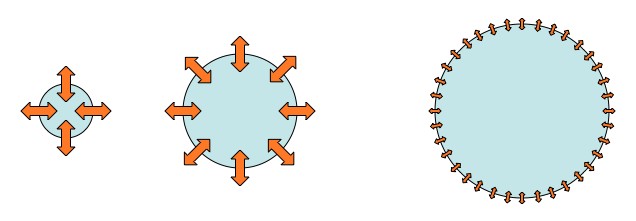Physicist: Almost nothing. We’d have plenty time to pack our bags and leave.
Assume that the cause of the fusion-stopping doesn’t matter, maybe the Weak force suddenly changed, or maybe the Vorgons used the Tax Uthat on the Sun, or whatever. The fusion just quietly stops (side note: if you got that reference, then it’s time to go outside).
There’s a lot of loose talk about the Sun being a huge atom-smashing machine, but in reality the hydrogen that fuels the Sun can wander about in the core (where the fusion takes place) for several hundred million years on average without being used in fusion. The rate of fusion that takes place in a fusion bomb, or that we hope to accomplish in fusion reactors, is more akin to an exploding star than a stable one. The core of the Sun (which is huge) produces heat through fusion at about the same speed that the human body produces heat. The difference is, while we can lose heat easily, the Sun can’t.
The thing about the Sun is not that it’s big, it’s that it’s so big. And in general the bigger something is, the longer it takes to cool off. A slightly warm cup of coffee (or “spot of tea”, for our UK readers) will drop to the surrounding temperature within minutes. But a slightly warm lake will take weeks or months to assume the temperature of the surrounding area. This is a big part of why the climate near big bodies of water tend to be more temperate; the water acts like a “thermal shock absorber”.
The amount of heat energy that something can hold is proportional to its mass. That is; two cups of coffee have twice the heat energy of one cup of coffee. But when something loses heat it loses that heat through its surface, whether that’s through radiating it away or through being physically in contact with cooler stuff.

The bigger something is the more mass is far away from the surface, and also the smaller the “surface area over mass ratio” becomes.
The bigger something is (assuming it’s not a really big and really flat) the more of the matter in it will be far from the surface. More than that, as size increases mass increases faster than surface area. So there’s more heat to get rid of, but proportionately less opportunity for it to get out. Even though the Sun is exposed to the icy vacuum of space, and is seriously hot, it barely cools off at all.
A hot cup of coffee (spot of tea) is about 60°C hotter that the surrounding environment (room temperature), and the Sun is about 5,800°C hotter than its surrounding environment (infinite nothing), so each cup-sized-piece-of-surface on the Sun is losing heat about 100 times faster than the cup of coffee. However, the Sun is approximately 30 billion times bigger across than a cup, and as a result it cools off about 30 billion times slower than a cup in similar circumstances (like a hot Russel’s teapot). The average heat energy in the Sun is around 12,000 times greater than the average heat energy of water (coffee or tea), so it’ll take about that much longer to cool off.
Update: The estimates in what follows are wildly incorrect. A correction with details can be found here. The wrong kind of heat transfer was assumed, and as a result the time scales became a lot larger. It looks like humanity would have no more than a hundred-thousand years (give or take), and the tougher parts of the biosphere would have no more than about a million.
Putting it all together, however long it takes for your hot-beverage-of-choice to cool off, it’ll take the Sun about 3.6 trillion times longer. If it takes your cup, say, one minute to become noticeably cooler, then it’ll take the Sun about 6.8 million years to cool off noticeably. The process is sped up a bit by the contraction of the Sun over time keeping its surface hot, but either way, if the Sun’s fusion stopped the only people who would notice right away would be the scientists studying solar neutrinos. This may seem a bit surprising, but in general, stars take a long time to cool off on their own.
We’d have millions of years to figure out how to build ships and leave for greener pastures (full of working stars), or figure out how to live with a cooler star when it became incapable of supporting life, tens of million years down the road.
The last two paragraphs were terribly wrong, over-estimations.
A good ‘n scary sci-fi weapon wouldn’t be something that halts fusion, but something that directly cools stars suddenly, or goes the other way and speeds fusion up (which is the important step in a nova).







Pingback: My bad: If fusion in the Sun suddenly stopped, what would happen? | Ask a Mathematician / Ask a Physicist